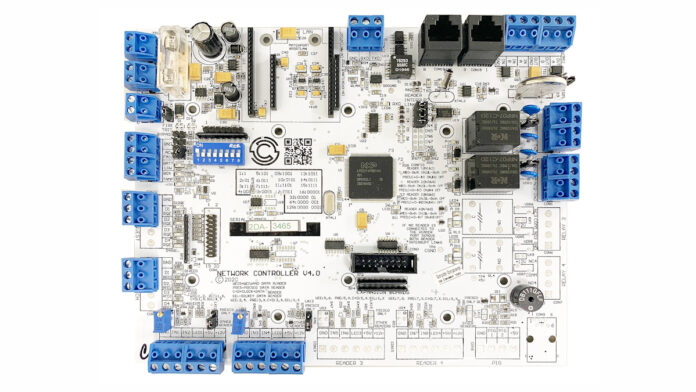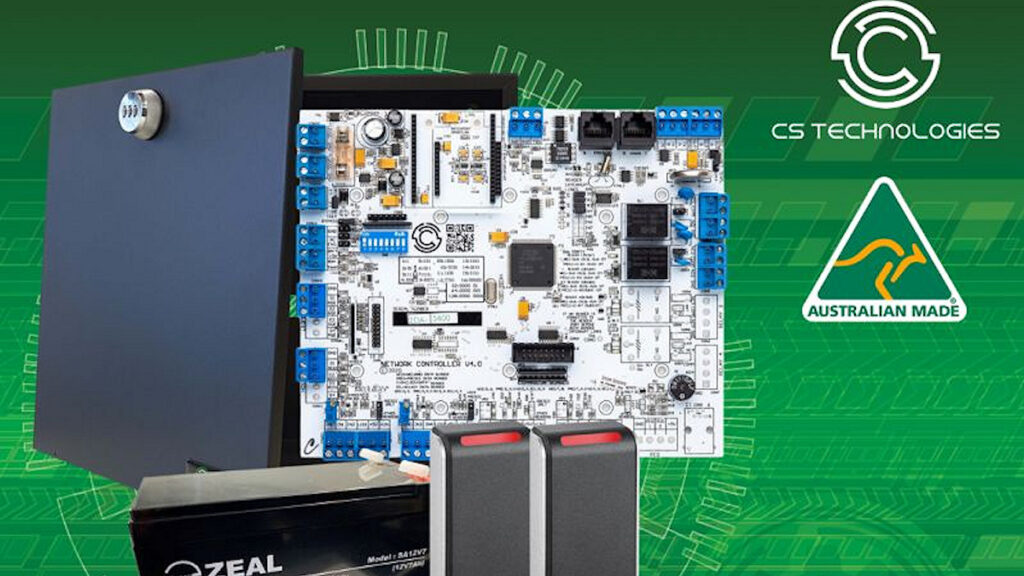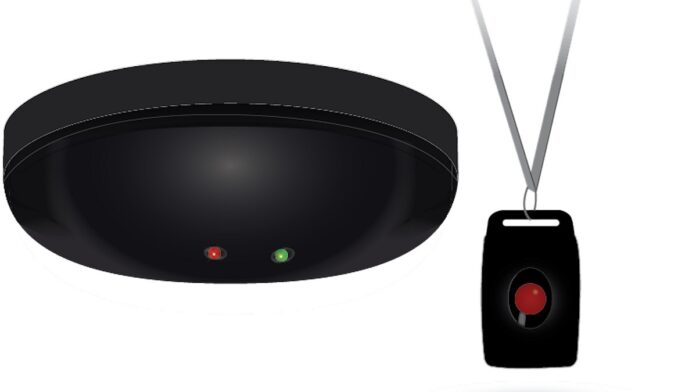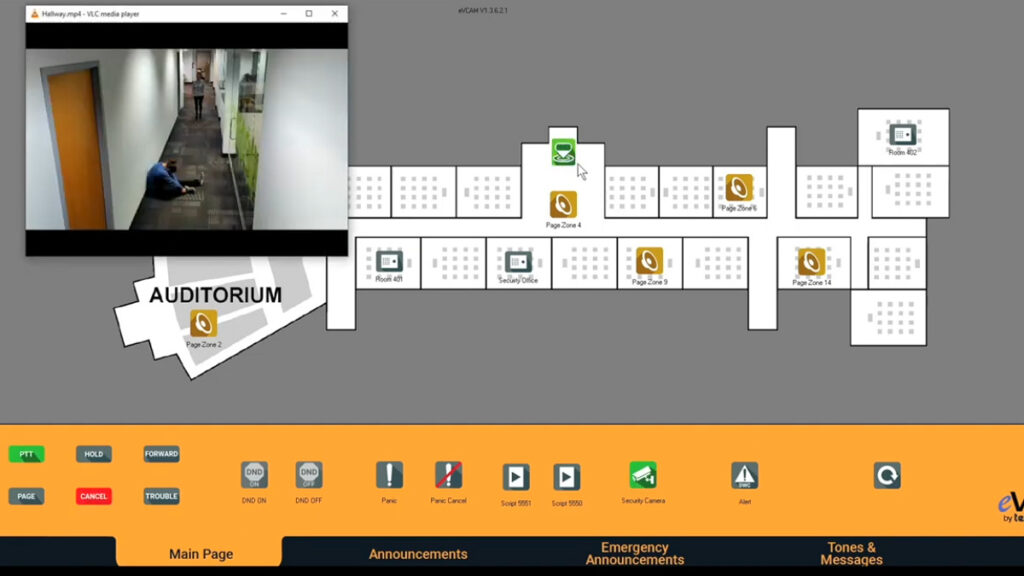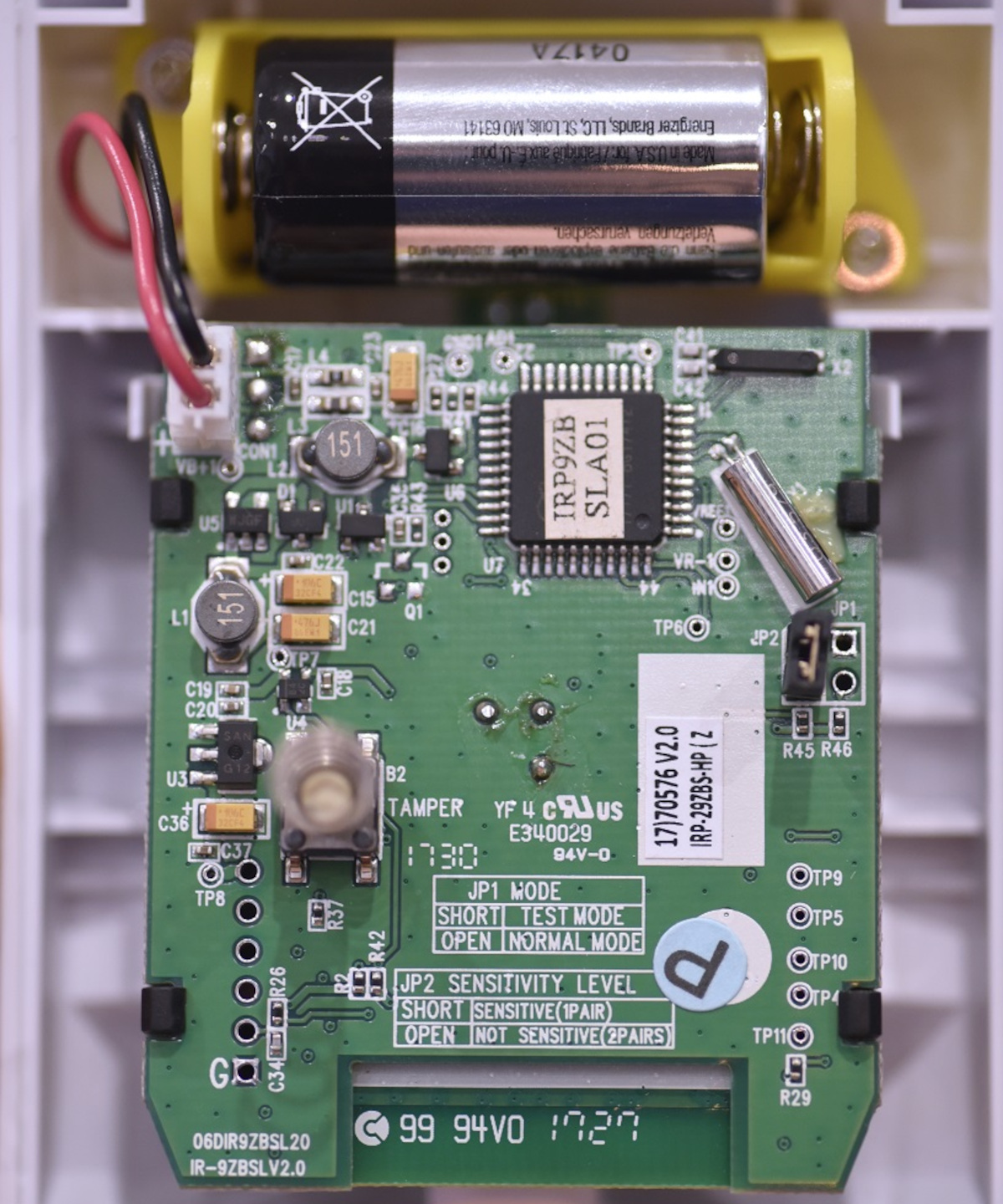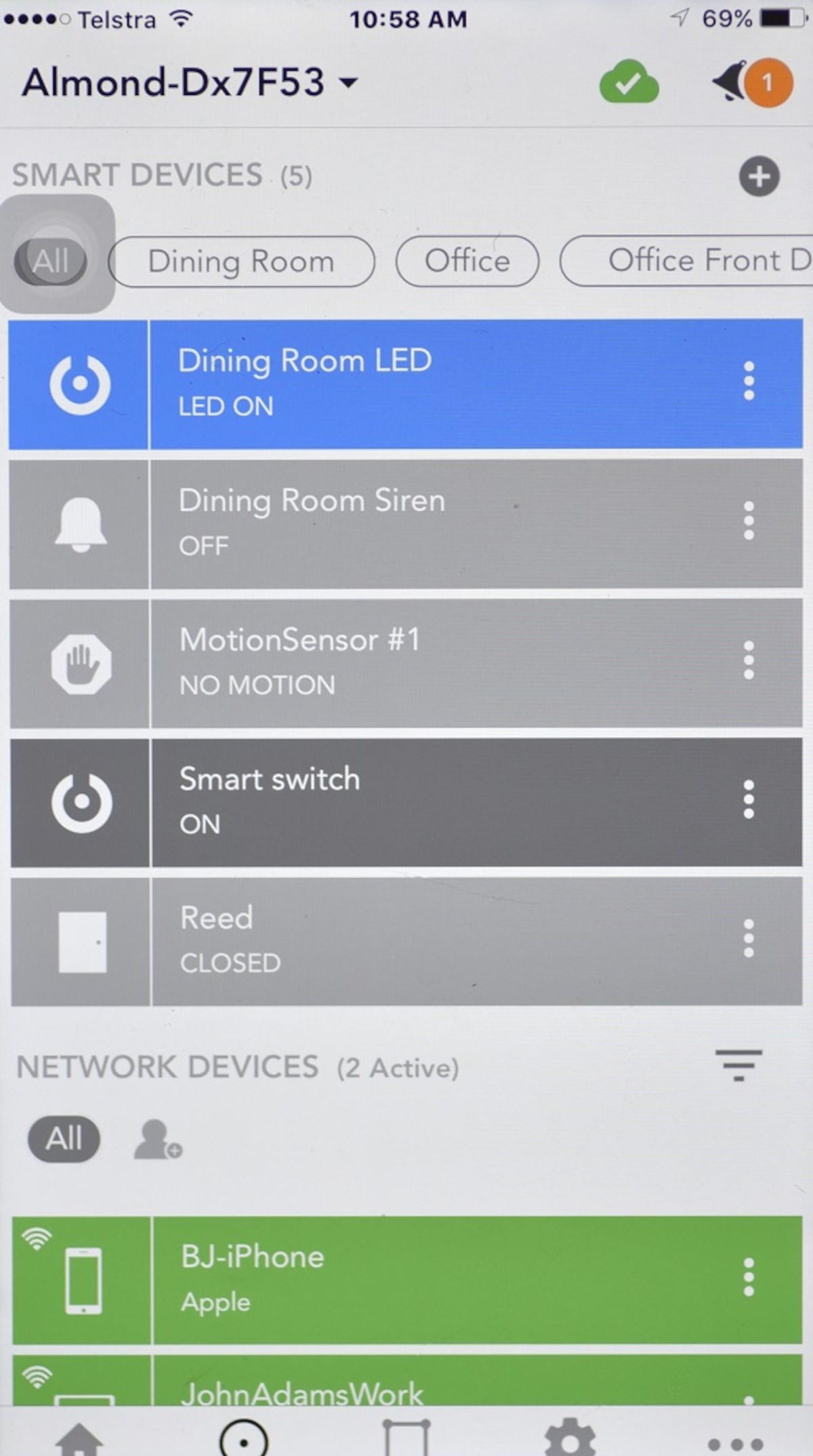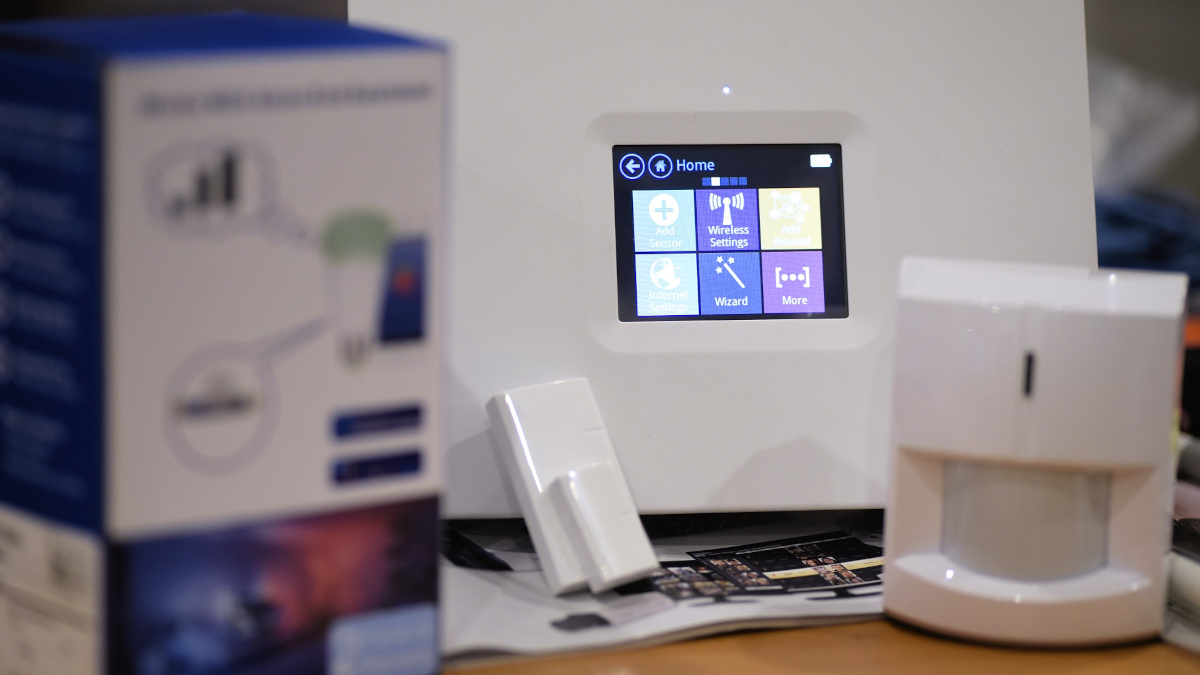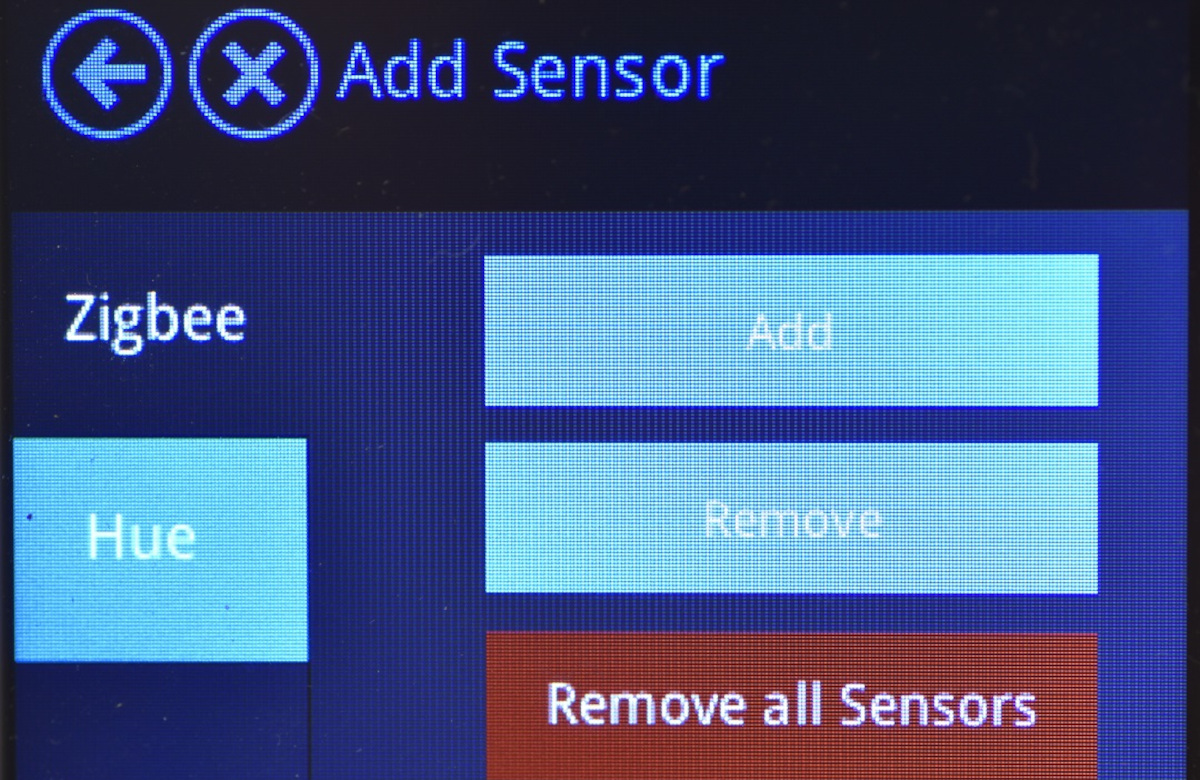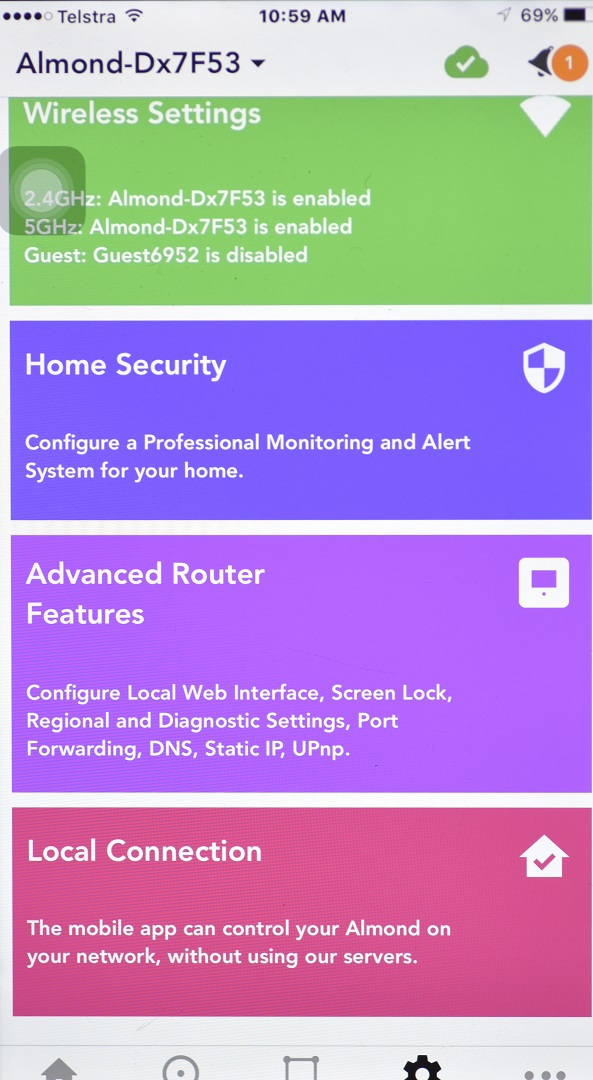SCSI Almond 3S Security Hub Solution
SCSI Almond 3S Security Hub Solution-hub-based security, automation, network access and management solution is an impressive collaboration from SCSI and manufacturer, Securifi. It’s a system designed to deliver almost everything to almost everyone – that includes professional installers and monitoring stations. The question is, does it deliver on the promises?
Sitting down with Chad Wright and Daniel Acott in Melbourne recently, I got a look at what felt like the future of alarm and home automation. The product in question is SCSI Almond 3S Security Hub Solution (it comes in other flavours, depending on your client’s needs).
“There have been many changes in the industry thanks to a fundamental shift that’s now coming very fast,” Wright tells me. “In short, the consumer isn’t wanting just an alarm system these days, they are more truly engaged and interested in the value-add of technology, asking what else can this system do for me?”
“The traditional alarms market has changed and is rapidly changing further. In ANZ, we have not been as fast to adopt this change as installers and monitoring providers in the U.S. have been. Here, we are still in our infancy in terms of adopting smart home automation. The traditional alarm panel has a limited shelf life in our opinion – the only thing holding on to it is the traditional installer, the consumer is not interested in it.“
“Meeting installers’ needs to provide the best possible product to their customers, the SCSI Almond 3S Security Hub Solution product is a third-gen solution combining security, home automation and networking services with hundreds of thousands of previous generation units already installed in homes and businesses throughout the U.S. marketplace. SCSI Almond 3S has many great attributes – it acts as the central hub of the home, bringing everything together and letting users control it, with support from professional installers and monitoring stations.”
According to Wright, SCSI’s collaboration and solution is designed so integrators can offer professional monitoring services in the usual way, and there’s also the capability to on-sell telecommunication services. This part sounds a bit oblique, but Almond’s capabilities are not to be underestimated.
“As a device, it’s a network router, an NBN router – this allows our partners an opportunity to on-sell NBN, whether it be fibre to the node, fibre to the premises, fibre to the curb, fixed wireless, or even ADSL,” Wright explains. “This is part of our new upcoming cloud service. We provide integrators with their portal, they can upload the types of services they want to offer and charge the prices they would like to charge. The consumer has the option to choose and select whatever service they require from the integrator on demand.”
According to Wright, the one box does everything – and that means everything. There’s a PPE connection to NBN, a Wi-Fi range extender, a wireless access point, a full-blown router.
It’s not about being just a security system
“You never need to pull a laptop out to manage SCSI Almond 3S, you can use the inbuilt touch screen or your mobile device,” Wright says. “It’s not about being simply a security system – it’s your full network solution, your full automation system, including voice assistant support“. It’s also your IoT security system because there’s an IoT security service built-in as well, so it can connect to and monitor all your IoT devices. With a simple command in the APP, it can even kick the kids off the network thanks to rules created from a customer’s smartphone to govern network connection and auto-disarm when it detects your phone via Wi-Fi.
“All the high-level intelligence is already there. The app lets you manage everything. It will report any connected devices using generic passwords, allowing you to lock them down. You can monitor URLs of devices. It has Wi-Fi self-heal, one-touch diagnostics, and self-monitoring that can be managed by the CMS with a fee“.
“It’s up to service providers to manage that – we are simply providing our partners with a platform that allows them to do anything they want. We are not dictating what they do, simply providing them with the solution and the ability to do anything they want while retaining very sticky recurring revenue – the stickiest of all recurring revenues is telecommunications“.
“If integrators like, we can manage Almond systems from the cloud. Users pay through the portal and config can be done for them. Installers can offer IoT, monitoring and almost any other service – everything can be automatically billed. There are push notifications managed through the app and sent to multiple users. Users can use the touch screen as a code pad or use their workstation or mobile device to manage the system“.
“One day a user might want SCSI Almond 3S to be a security system. Another day they might want it to be amazing Wi-Fi performance on the third floor, they might want security on demand, or to integrate IOT devices. And intelligence is distributed. Most other systems rely on cloud to think and if they lose internet connection, they lose their abilities until reconnected. But in the case of SCSI Almond 3S, the smarts are cached in the hub. And the onboard cellular modem can be turned on for internet access“.
“This means if the power is out locally, you will still have internet access, thanks to 4G modem onboard and backup battery.”
Wright says the collaboration with Securifi has paid dividends – it’s made Almond into a system that offers installers and monitoring stations a tool for recurring revenue generation based not on hot air but real services.
“We partnered in development of the latest version – Almond 3s – to assist with our own practical purposes, which includes the security side,” Wright explains. “It’s been developed to reflect the fact all telecommunications products are about recurring revenue – a router on its own gets no recurring revenue, a local security controller generates no recurring revenue“.
“But combine a smart home device with router capabilities, NBN capabilities 4G LTE, backup battery, voice, video verification, mesh wireless, dual-band Wi-Fi, full IFTT compatibility out of the box, Google Home, with all this in one device that manages your entire home, while supporting professional monitoring and professional subscription services for IoT and layers of network connectivity, and all of a sudden, you have a product that gives the smart integrator real opportunities“.
“Every possible security capability is there in one box that also offers full smart home automation capabilities. Almond is an entirely different way of thinking about things, and we know installers and their customers are going to love it.”
SCSI Almond Security System Specifications
Sitting down with the system later on, I can immediately verify Wright’s points for myself. Almond offers a solid specification. Yes, sure, it’s a hub. But it’s like no other hub I’ve ever come to grips with. Almond is not just holistic in conception and execution, it’s rugged, too. Peering through the ventilation grille on the rear of the unit, the first thing I notice is a substantial finned heat sink. Other feature sets speak for themselves. SCSI is a telco first and foremost, and not just a telco but a wireless telco. Almond speaks of SCSI’s decades-old mindset – a hunger for connectivity to everything.
On the hardware side, SCSI Almond 3S has a memory of 256 MB RAM with 64 MB Flash, the display is colour LCD/TFT 2.8-inch screen supports 320 x 240 pixels, there’s a USB 2.0 port and wireless comms include 2.4GHz (1.94-3.12 dBI), 5GHz (2.62-6.14 dBI) and Zigbee (2.7 dBI).
There is the following:
- 1 x Gigabit Ethernet WAN Port
- 2 Gigabit Ethernet LAN Ports
- WLAN is 2 x 2 11ac, 867Mbps
- 2 x 2 11n, 300Mbps
- IEEE 802.11a, IEEE 802.11ac, IEEE 802.11b, IEEE 802.11g, IEEE 802.11n wireless
Home automation devices also include:
- ZigBee (2.4GHz) with built-in siren
- Z-Wave in the US, Canada and Mexico (908.42 MHz)
- Which requires a Z-Wave USB dongle
- Built-in cellular and a built-In LTE Cat 1 module that supports US, Europe and Australian bands.
- Network protocols include TCP/IP, UDP, ICMP, PPPoE, PPTP, L2TP, NAT/PAT, DHCP, DDNS, WPS and mesh networking.
Other features include parental control, automatic firmware update, SPI firewall, DMZ, port forwarding, advanced content filtering methods (URL blocking, keywords blocking), filtering of IP and MAC addresses, MAC address cloning (for WAN), WAN connection in router mode: DHCP, DSL and manual IP. Operation modes include router, access point and repeater (Wi-Fi range extender).
A PIN code can manage LCD touch screen access, there’s cloud and weather information, screen saver, Android/iOS home automation control, wireless connection, multiple SSID; encryption: 64/128/256-bit, and WEP, WPA and WPA2. In terms of range, one unit covers up to 1300 square feet (1.21 a) and you can link up to 3 Almond units in a single solution to triple this.
Software features include USB file sharing, USB 3G/4G Modem support for selected models, iOS and Android apps, guest network, MAC filtering, management and configuration via touch LCD screen and web browser.
SCSI Almond 3S’ Other Features
There are hidden advanced features of the SCSI Almond 3S (via WWW), settings available via LCD display (without using a PC). These include a selection of operation mode (router, AP, repeater), activation and configuration of guest access (guest SSID), internet connection settings, Wi-Fi security settings, AP mode settings, IP and MAC addresses info, WPS control, passwords check and updates, firmware update. There is also a system log view (last several entries), data transfer counter, URL/Keywords filtering, user filtering (IP/MAC) and DMZ settings.
The hand feel of the Almond hub is good. Made of cast alloy and poly, the unit is designed for vertical operation and as mentioned, incorporates dependable fan-less passive cooling. There’s a power LED indicator on the front of the hub, LAN sockets, reset button and a power connector located on the right side of the unit. There’s a stylus for the LCD. Power demand is light – just 1.5A at 12V (Input: 120-240V, 50-60Hz), making Almond ideal for remote solar-powered applications – the built-in rechargeable battery with 5 hours battery life is a great addition, too.
Operating temperature is strong at -10 to 70C, and the unit is a compact 5.3 x 1.9 x 4.6 inches in external dimensions and has a weight of 1.5 pounds (0.68 kg).
My impressions of the specification are that SCSI Almond 3S is a hub that’s been designed to meet electronic security industry standards of redundant connectivity, resistance to power fail and extreme environments. While offering, levels of communications security no solid-state alarm controller has ever offered.
Setting up the SCSI Almond 3S Security Hub Solution
My little SCSI Almond 3S includes the hub, a PIR sensor, a reed switch, a smart switch and a smart light bulb. When handing the system over to me, Wright and Acott say they are not going to give any up-front advice – the system is simple enough for me to navigate the process by myself. Later, as I open the boxes and skim-read the instructions, I realise they are correct. Setting up Almond is a pleasure and I found myself thoroughly enjoying it – not only in terms of ease of use but wondering what else I could do with the system.
My get-go process is to plug in the hub, power it up and pop a drop cable into SEN’s Netgear switch, hit the power button and wait for the unit to boot up. This process takes a minute or so. The touch screen on the Almond Hub is a compact little thing – only 6 x 4.4 cm – and I wonder how I’ll go managing it with man hands. As it turns out, the simplicity of the system – its forgiving capacitive touchscreen seems to guess unerringly what I’m trying to do – means I’m quickly able to get things done. In a couple of minutes, I have the Almond app up on my iPhone, and the browser open on my workstation.
Connectivity is at the heart of SCSI Almond 3S and the next thing I want to see is just how easy it is to activate the Wi-Fi component of the system and see how well it works. The business of connecting my phone and any other devices to Almond’s 2.4Ghz or 5GHz Wi-Fi goes without a hitch. I just load the password into my devices and machines and away I go with range extended Wi-Fi. Very nice, indeed.
With the hub powered up, comms established, app downloaded, and browser connectivity attained, my next move is to load up my Zigbee sensors. The first device I connect is the IRP-29ZBS-SL pet immune motion sensor. Reading through the spec, I can see that targets seem to be within a 10-metre range in the installation diagram, though the useful depth of field of the sensing element and lens combo isn’t mentioned. Happily, my target area, facing the door and front window of the office at about 50 degrees, is about 7 metres from the lens, so no dramas there.
To add a sensor, you open the home screen on the hub with a tap, then tap on the top left icon – Add Sensor – then select Zigbee and tap Add. The screen instructs you to press your sensor’s pairing button and once this is done, the hub and sensor exchange the required handshake and the sensor appears in the sensor list of the keypad, app, and browser. As you’d expect, this process is altogether too simple for words, and it applies each time you add a sensor. I slot in the PIR, then a smart switch, then a reed switch and finally a smart light bulb. Each time, the hub, and sensor find each other with no dramas whatsoever.
In a couple of minutes, the process is over, and I find myself wishing there were more devices. I ended up on Amazon looking at Zigbee smoke, smart and PIR sensors – I never expected to be doing that. They’re not very expensive – between $20 and $50 – but I don’t recognise the brands and decided if SCSI sells them, I’ll be better off buying known quality with a proper warranty and support.
SCSI Almond 3S – Configuration, Automation, and Settings
More than any other smart home/security/networking solution I’ve played with, SCSI Almond 3S Security Hub Solution really has me engaged with the possibilities. Perhaps it’s the networking DNA of the thing – the multifarious comms paths, the rules-based programming of functionality. It might be the underlying SCSI DNA, too. This is a serious solution – I can’t help noticing the backup battery symbol on the hub screen. It starts out empty and by the time I’ve got everything sorted it’s half full. Hard not to like that. Combined with 4G LTE and passive cooling, you have a robust solution with Almond.
While on the topic of Almond’s home screen, it really is a simple affair that lets you delve into functionality simply and easily. Most installers are going to use the touch screen just to get things up and running and then revert to a tablet or smartphone for the heavy lifting. But using the compact little touch screen is a snap. Compared with the old way of pulling out a giant index of codes and plugging them, flitting through this icon-based menu is effortless.
Managing configuration with the app is easy, too. Again, there’s oodles of depth. Something else I notice as I start scratching away at the surface of Almond is SCSI-inspired stuff like professional monitoring (it’s disabled in my case) and IOT Security – again, you need to activate a subscription to get access to IOT Security. It’s atop these strong functionalities that installers and monitoring stations are going to plant their flags. This SCSI Almond 3S system has so much lateral capacity and so much depth, it would be a rare end user who could shake out all the possibilities. Meanwhile, professionals who really engage with this system will find endless sales hooks.
When it comes to mobile device operation, you drive the app across the bottom toolbar – Dashboard, Devices, Automation, and Settings – tap More and the list expands vertically to include Subscriptions, Help, IP Cameras, Preferences (which category you nominate as home), and other stuff. Dipping in, I find that the Rules are near – you can get the system to arm and disarm at set times of day, or undertake actions when your smart device approaches. And given this is a networking animal, you can also have it report when particular devices try to access the Wi-Fi network, allowing you to keep an eye on the kids.
The Settings Menu is comprehensive and lets you manage networks, wireless settings, config professional home security monitoring, twiddle with advanced router features, connect to the Almond locally, report problems and do updates, reboot and reset all clients.
Devices, meanwhile, gives you a list of all the devices engaged with Almond – security sensors and smart switches at the top and network devices like mobile devices and workstations listed underneath. While scrolling through the list, I notice the reed switch dishing up real-time temperatures from inside the office. And that’s how it is with Almond. What can it do? Well, whatever you want it to do and presents to the world through an app that offers an attractive and intensely functional user experience.
Challenges of the installation included trying to get the smart light bulb out of its tight foam packaging. This occupied me for 30 seconds, and such is the hunger for plug and play in the modern era. I was mildly surprised the bulb didn’t climb out of the box by itself, salute, then rush for the nearest light fitting. Another challenge was trying to fit the stand on the back of the hub without looking at the instructions. I failed to pass this test. Finally, the tamper switch on the reed required a magnifying glass to find (I need reading glasses bear in mind) but that’s been addressed by a simple new wall mount.
When it came to required tools, I came packing a PC tool kit, complete with 2 sets of spudgers, one metal, one plastic, as well as a set of 5-dollar screwdrivers from the 2-dollar shop on the corner of Foveaux and Mary. In the event, I was packing heavy – all that was required to set up the system was a medium Stanley flat head and my thumbnail.
In Conclusion
In short, the SCSI Almond 3S is a sweet system. Hours after leaving the office, I am still mucking around with the app and checking out ZigBee sensors online. There’s so much fine motor control with this system, you simply can’t help wanting to explore it. And that’s the beauty of the SCSI Almond 3S from the point of view of installers and monitoring people. This system has such depth few end users will be able to get the most out of it, yet they are really, really going to want you to try.
There are more details on Almond Smart Security products from SCSI here and you can read other cameras and security review articles from SEN news here.
“It’s not about being just a security system – it’s your full network solution, your full automation system, including voice assistant support”.






